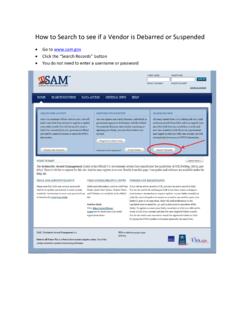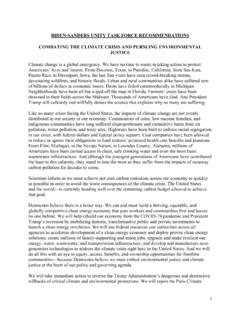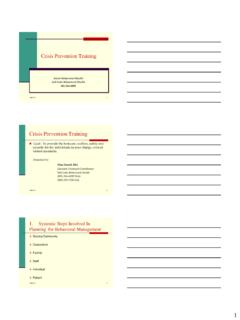Transcription of Handouts for Crisis Survival Skills - Wesleyan University
1 Handouts for Crisis Survival Skills DISTRESS TOLERANCE HANDOUT 2 (Distress Tolerance Worksheets 1 7b). Overview: Crisis Survival Skills These are Skills for tolerating painful events, urges, and emotions when you cannot make things better right away. The STOP Skill Pros and Cons TIP Your Body Chemistry Distract with Wise Mind ACCEPTS. Self-Soothe with the Five Senses Improve the Moment From DBT Skills Training Handouts and Worksheets, Second Edition by Marsha M. Linehan. Copyright 2015 by Marsha M. Linehan. Permission to photocopy this handout is granted to purchasers of this book for personal use only (see copyright page for details). 325. DISTRESS TOLERANCE HANDOUT 3. When to Use Crisis Survival Skills YOU ARE IN A Crisis when the situation is: Highly stressful. Short-term (that is, it won't last a long time). Creates intense pressure to resolve the Crisis now.
2 USE Crisis Survival Skills when: 1. You have intense pain that cannot be helped quickly. 2. You want to act on your emotions, but it will only make things worse. 3. Emotion mind threatens to overwhelm you, and you need to stay skillful. 4. You are overwhelmed, yet demands must be met. 5. Arousal is extreme, but problems can't be solved immediately. DON'T USE Crisis Survival Skills for: Everyday problems. Solving all your life problems. Making your life worth living. From DBT Skills Training Handouts and Worksheets, Second Edition by Marsha M. Linehan. Copyright 2015 by Marsha M. Linehan. Permission to photocopy this handout is granted to purchasers of this book for personal use only (see copyright page for details). 326. DISTRESS TOLERANCE HANDOUT 4 (Distress Tolerance Worksheets 2, 2a). STOP Skill S top Do not just react.
3 Stop! Freeze! Do not move a muscle! Your emotions may try to make you act without thinking. Stay in control! T ake a step back Take a step back from the situation. Take a break. Let go. Take a deep breath. Do not let your feelings make you act impulsively. O bserve Notice what is going on inside and outside you. What is the situation? What are your thoughts and feelings? What are others saying or doing? P roceed mindfully Act with awareness. In deciding what to do, consider your thoughts and feelings, the situation, and other people's thoughts and feelings. Think about your goals. Ask Wise Mind: Which actions will make it better or worse? Note. Adapted from an unpublished worksheet by Francheska Perepletchikova and Seth Axelrod, with their permission. From DBT Skills Training Handouts and Worksheets, Second Edition by Marsha M.
4 Linehan. Copyright 2015 by Marsha M. Linehan. Permission to photocopy this handout is granted to purchasers of this book for personal use only (see copyright page for details). 327. DISTRESS TOLERANCE HANDOUT 5 (Distress Tolerance Worksheets 3, 3a). Pros and Cons Use pros and cons any time you have to decide between two courses of action. An urge is a Crisis when it is very strong and when acting on the urge will make things worse in . the long term. Make a list of the pros and cons of acting on your Crisis urges. These might be to engage in . dangerous, addictive, or harmful behaviors, or they might be to give in, give up, or avoid doing what is necessary to build a life you want to live. Make another list of the pros and cons of resisting Crisis urges that is, tolerating the distress . and not giving in to the urges.
5 Use the grid below to evaluate both sets of pros and cons (this type of grid is also used in . Distress Tolerance Worksheet 3). Or you can use the type of grid seen in Distress Tolerance Worksheet 3a and in the pros-and-cons worksheets for other modules. PROS CONS. Pros of acting on impulsive urges, Cons of acting on impulsive urges, giving in, giving up, or avoiding what giving in, giving up, or avoiding what needs to be done. needs to be done. Acting on Crisis urges Pros of resisting impulsive urges, Cons of resisting impulsive urges, doing what needs to be done, and doing what needs to be done, and not giving up. not giving up. Resisting Crisis urges Before an overwhelming Crisis urge hits: Write out your pros and cons; carry them with you. Rehearse your pros and cons over and over. When an overwhelming Crisis urge hits: Review your pros and cons.
6 Get out your list and read it over again. Imagine the positive consequences of resisting the urge. Think of the negative consequences of giving in to Crisis behaviors. Remember past consequences when you have acted on Crisis urges. From DBT Skills Training Handouts and Worksheets, Second Edition by Marsha M. Linehan. Copyright 2015 by Marsha M. Linehan. Permission to photocopy this handout is granted to purchasers of this book for personal use only (see copyright page for details). 328. DISTRESS TOLERANCE HANDOUT 6 (Distress Tolerance Worksheet 4). TIP Skills : Changing Your Body Chemistry To reduce extreme emotion mind fast. Remember these as TIP Skills : TIP THE TEMPERATURE of your face with COLD WATER*. (to calm down fast). T Holding your breath, put your face in a bowl of cold water, or hold a cold pack (or zip-lock bag of cold water) on your eyes and cheeks.
7 Hold for 30 seconds. Keep water above 50 F. INTENSE EXERCISE*. (to calm down your body when it is revved up by emotion). I Engage in intense exercise, if only for a short while. Expend your body's stored up physical energy by running, walking fast, jumping, playing basketball, lifting weights, etc. PACED BREATHING.. (pace your breathing by slowing it down).. Breathe deeply into your belly.. Slow your pace of inhaling and exhaling way down (on average, five to six breaths per minute).. Breathe out more slowly than you breathe in (for example, 5 seconds in and 7. seconds out).. P.. PAIRED MUSCLE RELAXATION. (to calm down by pairing muscle relaxation with breathing out).. While breathing into your belly deeply tense your body muscles (not so much as to cause a cramp). Notice the tension in your body.. While breathing out, say the word Relax in your mind.
8 Let go of the tension.. Notice the difference in your body. *Caution: Very cold water decreases your heart rate rapidly. Intense exercise will increase heart rate. Consult your health care provider before using these Skills if you have a heart or medical condition, a lowered base heart rate due to medications, take a beta- blocker, are allergic to cold, or have an eating disorder. From DBT Skills Training Handouts and Worksheets, Second Edition by Marsha M. Linehan. Copyright 2015 by Marsha M. Linehan. Permission to photocopy this handout is granted to purchasers of this book for personal use only (see copyright page for details). 329. DISTRESS TOLERANCE HANDOUT 6B (Distress Tolerance Worksheet 4a). Paired Muscle Relaxation, Step by Step If you have decided to practice paired muscle relaxation, it can be very helpful to practice relaxing each of your muscles first.
9 When you are starting, practice in a quiet place to reduce distractions, and make sure that you have enough time. As you improve with practice, you will want to practice in many different kinds of places, so that you can relax effectively when you most need to. Remember that effectiveness improves with practice. If judgments arise, observe them, let them go, and return to your practice. If you become anxious, try focusing on breathing in to the count of 5 and out to the count of 7 (or the counts you have already determined for paced breathing), breathing all the while into your belly until you can return to relaxation exercises. Now that you are ready to begin .. 1. Get your body into a comfortable position in which you can relax. Loosen tight clothing. Lie or sit down, with all body parts uncrossed and no body part supporting any others.
10 2. For each area of the body listed below, gather tension by tightening muscles. Focus on the sensation of tightness in and around that area. Hold the tension as you inhale for 5 6 seconds, then release and breathe out. 3. As you release, say in your mind very slowly the word Relax.. 4. Observe the changes in sensations as you relax for 10 15 seconds then move on to the next muscle. Start first with each of the 16 muscle groups. Once you can do that, practice with medium groups of muscles and then large groups. Once you are good at that, practice tensing your entire body at once. When you tense your entire body, you are like a robot stiff, nothing moving. When you relax your entire body, you are like a rag doll all muscles drooping down. Once you can relax all your muscles, practice three or four times a day until you can routinely relax your entire body rapidly.












